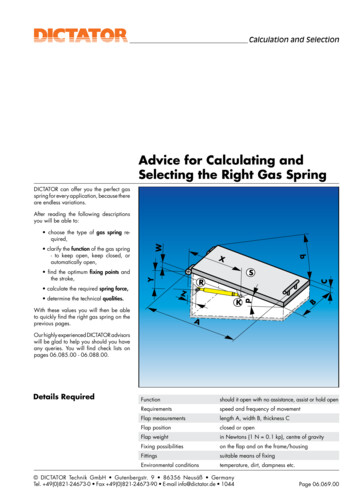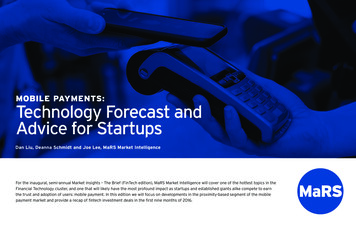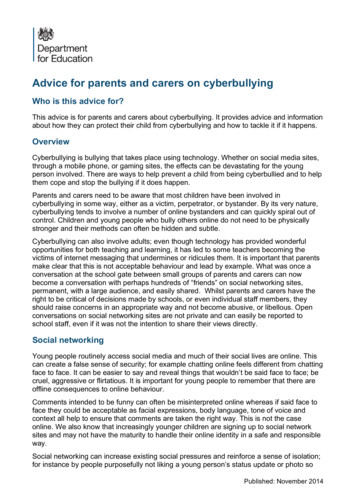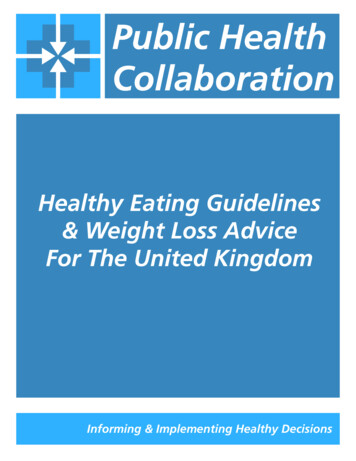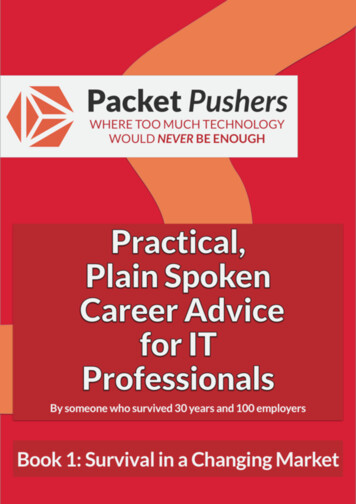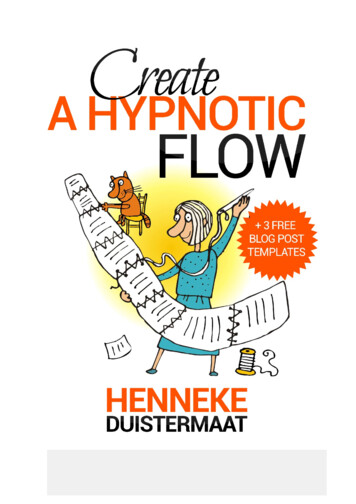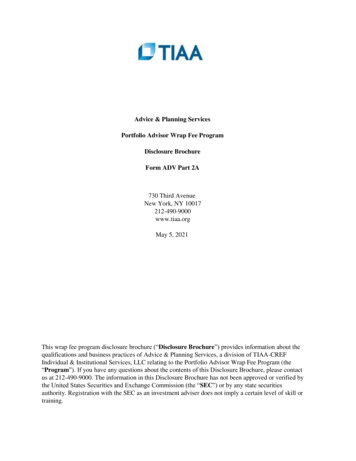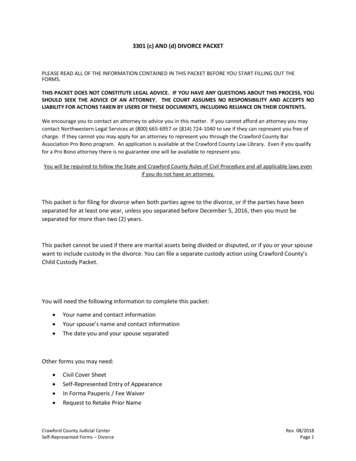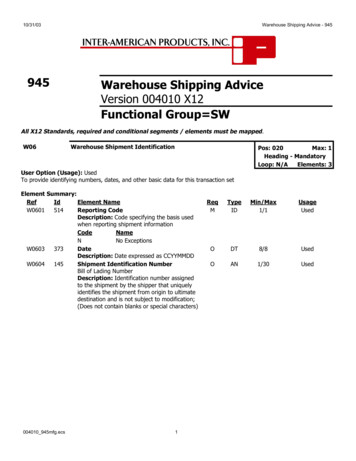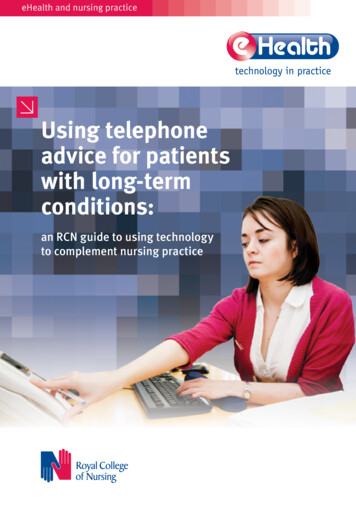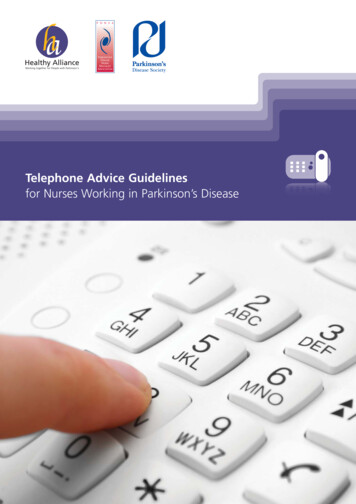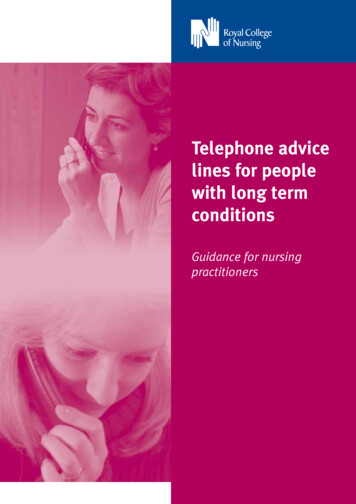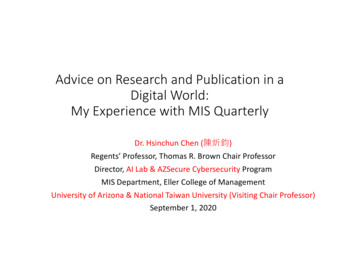
Transcription
Advice on Research and Publication in aDigital World:My Experience with MIS QuarterlyDr. Hsinchun Chen (陳炘鈞)Regents’ Professor, Thomas R. Brown Chair ProfessorDirector, AI Lab & AZSecure Cybersecurity ProgramMIS Department, Eller College of ManagementUniversity of Arizona & National Taiwan University (Visiting Chair Professor)September 1, 2020
Outline My Disclaimers My Academic Background & Research Focus Publication: Publishing in Major Journals Consistently (mostly designscience in MISQ) Research: Getting Major Grants Consistently (mostly applied CS research inNSF) Parting Thoughts & Advice2
My Disclaimers: Disclaimer 1: It’s based on my limited,personal journey & experience. Disclaimer 2: It’s about how to survivein b-school with consistent majorjournal publications (e.g., MISQ) indesign science. Disclaimer 3: It’s about how toconsistently obtain major federal grants(e.g., NSF) to support high-impactapplied computing research. Disclaimer 4: Different researchers at adifferent time or place will havedifferent opportunities.3
My Background & Focus: (1) AppliedComputing & Design Science Founded the UA Artificial Intelligence Lab in 1989 & UAAZSecure Cybersecurity Program in 2013 è need a lab orprogram Internationally renowned for leading research and developmentin the health analytics (data and text mining; health big data;DiabeticLink and SilverLink) and security informatics (counterterrorism and cyber security analytics; security big data;COPLINK, Dark Web, Hacker Web, and AZSecure) communities.è need focus and specialty in emerging fields4
My Background & Focus: (2) Publications Author of 20 books, 300 SCI journal articles, and 200 refereedconference articles covering digital library, data/text/web mining,business analytics, security informatics, and health informatic èpapers will come Overall h-index 103 (42,000 citations for 900 papers according toGoogle Scholar), among the highest in MIS and top 50 in computerscience è citations will come Editor-in-Chief, Senior Editor or AE of major ACM/IEEE (ACM TMIS,ACM TOIS, IEEE IS, IEEE SMC), MIS (MISQ, DSS) and Springer (JASIST)journals and conference/program chair of major ACM/IEEE/MISconferences (ICIS, IEEE ISI, ICADL, ICSH) è becoming a communityleader5
My Background & Focus: (3) Grants Received 50M research funding from NSF, NIH, NLM, DOD, DOJ,CIA, DHS, and other agencies (100 grants, 50 from NSF). Servedas lead Program Director of the Smart and Connected Health (SCH)Program at the NSF for 2014-2015 èmajor funding helps, a lot! A successful IT entrepreneur; His COPLINK/i2 system for securityanalytics was commercialized in 2000 and acquired by IBM as itsleading government analytics product in 2011. è somecommercialization opportunities (founded 7 companies) Visiting Chair Professor at several major universities in China(Tsinghua University) and Taiwan (National Taiwan University);Fellow of ACM, IEEE and AAAS è kudos will come6
Positioning in Major Journals: i-School,c-School, b-School i-School ( 80K) & health informatics Journals: JASIST, ACM TOIS; JAMIA, JBIè “informatics” (text) focused, system driven; helpful for NSF & NIH/NLMfunding c-School ( 100K) Journals: ACM TOIS, IEEE TKDE, CACM, IEEE IS, IEEEComputer, IEEE SMC è algorithm/computing focused, data driven; helpedsignificantly with NSF funding (same for major CS conferences) b-School ( 180K) Journals: MISQ, ISR, JMIS, MS, ACM TMIS, DSS è “designscience” focused, managerial framework/principle/knowledge base;helped get jobs in major b-schools (little federal funding)7
Preparing for Major Journals: The Process &Learning Curve Training in BS, MS, Ph.D. è needing strong methodological (e.g., DL,NLP) and domain (e.g., cybersecurity, health) training; needingmatching, helpful advisors/mentors (becoming your own) Becoming a researcher & author è completing “novel” research(methodology or domain); writing from conference paper to journalpaper; learning from your advisors/mentors Becoming a reviewer & AE è becoming a PC member; doingprofessional reviews; impressing senior AE/SE/EIC; publishing intarget journals; networking in major conferences Becoming SE/EIC è Becoming a community leader; It takes time.8
Major Journals: My Journey Training in BS, MS, Ph.D. è NCTU, U Buffalo, NYU; AI, DB, IR; Ph.D.,1985-1989 (math, statistics & computer science English/communication/EQ) Becoming a researcher & author è AAAI, IJMMS, IEEE SMC, JASIST,CACM, ACM TOIS; DSS, JMIS; assistant prof, 1989-1996 Becoming a reviewer & AE è IEEE SMC, JASIST, ACM TOIS, DSS;associate/full prof, 1996-1998 Becoming SE/EIC è IEEE IS, ACM TMIS, MISQ; full/chair prof, 2008 9
Major Journals: MISQ & JMISMISQ SEs MISQ: A journal, #1 in MIS (UTD and FT listed) behavior/management focused traditionally (most SEs) recent focus in business analytics & data sciences (SEs: HRR,GA, IB, PK, JP) è selecting the right SEs/AEs Computational design science: application-inspired novelty(algorithm, representation, framework, HCI) societalimpact è significant content & mature writing (40 pages) MIS-specific lit review methodology/framework/design“theory” contribution to KB principles (researchabstraction) è right packaging JMIS: A journal, #3 in MIS Same as above; more system driven Zwass Nunamaker; HICSS special issue10
Chen’s Publications: i-, c-, b-school, CISE Work hard; be persistent; colleagues &students help a lot; a little bit of luck helps11
Working with Collaborator, e.g., Dr. Shu-Hsing Li, NTU, 5 JournalPapers and 4 Conference Papers, 2011-2017MISQ,2017
Major Journals: Chen, AI Lab ComputationalDesign Science (CDS) Papers in MISQ, 2008 Forthcoming, 2020Health Analytics; Deep LearningSpecial Issue, Business Analytics; 5800 citationsHealth AnalyticsSecurity AnalyticsSecurity Analytics; Best Paper, ICIS, 2010Health AnalyticsSocial Media Analytics13
Major Journals: Health IT & Analytics SpecialIssue, March 2020
Major Journals: MISQ CDS Common Issues MISQ, My Experience: no paper/involvement before 2008 (no SE indesign science); Abbasi 2008 (CyberGate), 2010 (AZProtect, ICIS bestpaper); Guest Editor, BI&A special issue, 2010-2012 (Straub); SE 20162019 (Rai); Guest Editor, Health IT/Analytics special issue, 2016-2020(Rai) Design Science paper common issues: Where is the theory? Is this MIS? (early reviewers’ critiques) Few qualified/sympathetic design science SEs, AEs, reviewers. (overly critical) Long review cycle (2-4 rounds/years) and uncertainty (rejection at late round).è but BI&A and data sciences are hot, in society and in b-school curriculum! Young MIS CDS scholars need 1-2 MISQ/JMIS papers accepted or in deep round. Mid-career MIS CDS scholars need 3-5 MISQ/JMIS papers for tenure.15
Major Journals: MISQ CDS Paper Template Computational design science (Chen in Rai, 2017): application-inspirednovelty (algorithm, representation, framework, HCI) emerging highimpact problems Significant content & mature writing (40 pages; need 4 years training) MIS-specific lit review (3-4 pages) è Who/what had (been) published inMISQ/ISR/JMIS (10-20 MIS references, taxonomy, analytics relevance) Methodology/framework/design “theory” (2-3 pages) è underlyingmethodological foundation (not behavioral theory of /- hypotheses), e.g.,Systematic Functional Linguistic Theory, Kernel Learning Theory, etc. Contribution to KB principles (research abstraction; 2-3 pages) è Whathave been learned about the design, use and general knowledge gained?è Carefully study sample MISQ DS papers, e.g., (Abbasi, 2008; 2010).16
Major Journals: MISQ CDS Review Process Make sure the research fits. è Emerging high-impact problems some (not a lot)application-inspired novelty Make sure writing is mature. è Error-free! (40 pages) Select the “right” SEs and AEs. è Recruit and/or consult a senior experiencedMISQ DS scholar. 1st-round review; hope for the best after 6 months. è Getting Major Revision isgood (10 pages of feedback is common)! Now their demands are clear! 1st-round revision is important; in 6 months. è Showing appreciation, respectand tangible revision actions. Don’t fight/argue! (50 pages of response letter!) 2nd/3rd/4th round review/revision è Removing one critical reviewer at a time;more Minor Revision and/or Accept over time Final decision; 2-4 years later è Eventually the SE needs to make a decision.Everyone is tired after so many years!17
Major USA Research Funding Programs: NIH,DARPA, DHS, IARPA (Novelty Impact) NIH: NLM is informatics-focused; “translational” research with someapplication-inspired health-related novelty; need pubs and networking inAMIA/JAMIA; strong health informatics (NLM) tradition and turf (strongpersonality) è Chen as NLM Scientific Counselor, 2002-2006 DOD/DARPA: was innovative, basic/foundational, long-term (ARPA Net);now mission-critical, system-driven, short-term; commercial company(defense contractor) as prim, academic as sub; bi-monthlymilestones/metrics/reporting è Chen early success withDARPA/IARPA/DHS for COPLINK/Dark Web research DHS, IARPA: similar to DARPA, but aspiring; lesser scientific quality (strongpersonality)è Not my focus any more! (Need to smell like them.)18
Major Grants: NSF Org Chart( 8.3B)BIOCISEEHRENGGEOMPSSBE19
Major NSF CISE Grants:IT Research Changing the World in 50 YearsUniversity research è Industry R&D è Products è 1B Market (job and wealth creation)20
Major Grants: NSF Proposal Observations Computational Design Science (CDS) has excellent chance for successfulproposals (CISE). è in general, not so much for behavioral or economicsMIS researchers (SBE; too basic, too incremental, not novel). “Business” (finance, accounting, marketing) school research is notconsidered STEM. è need to position for larger societal/STEM problems. CDS research needs to compete with CS researchers (“locusts” in emergingtechnical fields); deep & novel domain application for emerging societalproblems could be viable. è my approach at least, for the past 30 years:digital library, intelligence, health, cybersecurity, etc. Need application or domain-inspired novelty for applied cross-directorateprograms. è senior Ph.D. students; last 1-2 dissertation chapters A lab or center can help with sustainable advantage and funding. èdeveloping collection, prototype system, etc.; structure & organizationalmemory21
Major Grants: NSF The Process NSF Funding Criteria: “transformational/novel” research; IntellectualMerit (IM, 60-80%) Broader Impacts (BI, 20%-40%); depending on Coreor Applied Program The Process:1.2.3.4.5.6.7.8.9.Select the right program and project size.Consult experienced senior scholars.Select emerging novel research under way (your strength; 50% done, unpublished) for aproposal.Develop the proposal (15 pages) and supporting documents (20-40 pages) in 1-2 weeks.Submit and be prepared to get rejected!Learn from the written panel reviews. Contact the Program Director (PD) to seekfeedback.Repeat 1-6 for 2-3 times for the same program. Volunteer to the PD to be a panelist.Learn from reviewing other proposals and actual panel reviews & decisions at NSF. (2days, 8 panelists, each do 8/22 proposals)Repeat 1-8 2-3 times until receiving grant or giving up (in 3-4 years)!22
Major Grants: NSF General Advice for CDS Scholars(Publishable Research è Fundable Research) Develop methodological novelty and application-specific strengths overyour career. è world-class excellence vs. other CS scholars Train your Ph.D. students well. è their last 2 dissertation chapters couldbe fundable; they can be trained to write proposals (scale & efficiency) Build a center/lab/group. è more sustainable and impressive (commonin CS, ECE, MED) Improve your grantsmanship. è get to know your PDs and becomefrequent NSF panelists (getting into their heads) Improve your success rate to 30% (from 5%). è target repeatingprograms for re-submissions Monitor and anticipate current and emerging programs. è prepare thenext proposals; repeat the cycle!23
Parting Thoughts: Hard Work A Bit of Luck Societal Impact Academic Impact Looking for high-impact societal problems (NYT, WSJ, The Economist) IT MIS MIS is a smaller subfield within broader IT/computing. CISE SBE Computational Design Science can make a difference. New Old Looking for new, interesting, unknown problems EQ IQ Hard work, discipline, aspiration, time management, team player, etc.always beat raw talent. Plus a bit of luck!24
For more information (resources &papers): http://AI.Arizona.edu
ACM TOIS, IEEE IS, IEEE SMC), MIS (MISQ, DSS) and Springer (JASIST) journals and conference/program chair of major ACM/IEEE/MIS conferences (IC
